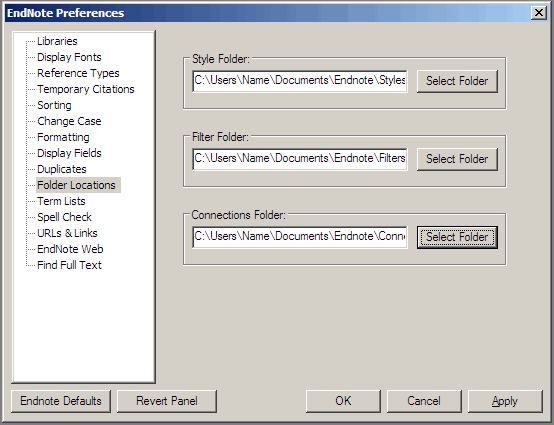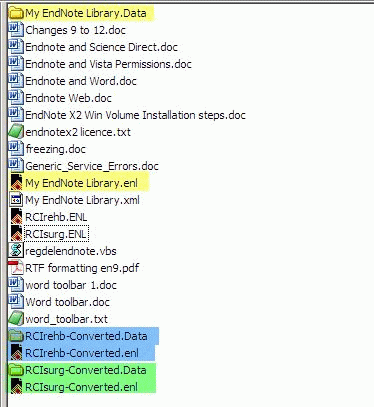These notes apply to those using laptops that belong to the University Domain (uocnt). This applies to most staff laptops where the laptop is that staff-member's principal computer at work; it may also apply to some student laptops, but in most cases students will not be able to install EndNote over the network (you will not see the option in Add/Remove programs) and should follow these instructions instead.
If you have a laptop which is connected to the UC network at some times but not at others (e.g. you take it home) and you want to use EndNote when not on the network, there is one thing to be aware of; file locations.
If you install your laptop when on the network, using the standard installation instructions for Installing EndNote on campus, EndNote will work fine on campus. But the default installation sets EndNote to looking at the Style, Filter and Connection files on the University network. Your laptop will not find these when disconnected from the network. Also, by default, your libraries will probably reside in your 'My Documents' folder on your P: drive. Depending on your computer's synchronization settings these may not be visible from home. If this doesn't work for you, it would be worth asking the IT staff who support your department to set this up for you as it means no extra action on your part and your files will be backed-up. Even if synchronization works, if you intend working offline for an extended period, it would be sensible to use the EndNote File, Save a Copy menu function to regularly save a backup copy of your libraries to an external device e.g. a memory stick.
Styles, Filters and Connections
The easiest way to deal with the styles, filters and connections, is to change the location within EndNote so that it points to the laptop's own hard drive. Use Edit > Preferences > Folder Locations within EndNote to get to these settings.
A typical set of locations would look like this:
If these folders do not exist, you should create them and then copy the UC styles, filters, and connections into the correct folders.
Libraries
If these are normally stored on your P: drive, then, when you are disconnected from the network, they may be unavailable.
If your computer synchonizes files on login and logoff, it may well be that your EndNote libraries will be available offline, and will synchronize with the networked libraries when you reconnect to the network. If this doesn't work for you, it would be worth asking the IT staff who support your department to set this up for you as it means no extra action on your part and your files will be backed-up.
If this is not possible, another option is to store your libraries on your laptop in any folder your like - so long as you can find it e.g. C:\endnote. Yet another is to keep them on a memory stick. If you use either of these options, ensure you regularly make backup-copies, either onto your P: drive or onto some other device. This is strongly recommended because libraries on your laptop or memory stick will not be backed-up at all. Regularly saving a copy back to your P: drive will provide security.
Note that if you are copying EndNote libraries, each library also has an associated data file which must also be copied. So, for example, in this directory listing there are three libraries - highlighted in the same colour are the corresponding data folders:
Depending on your computer settings, you may not see the suffixes (i.e. .enl and .data).

